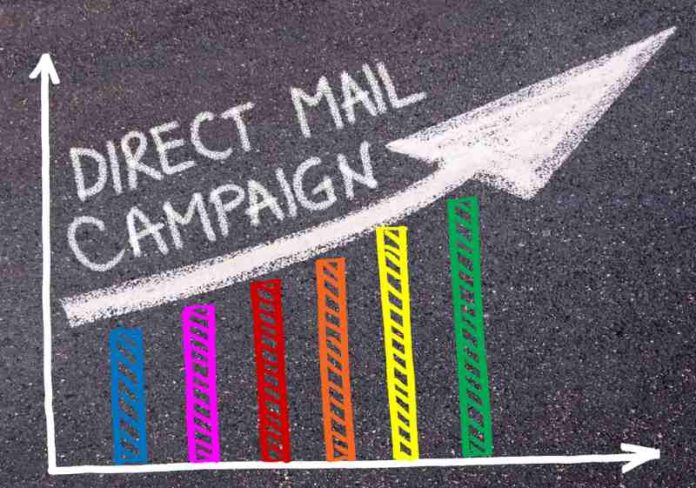By Kevin Evans
Facebook and Google have played starring roles in most integrated marketing strategies for the past decade. There’s no denying that the duopoly is effective but relying solely on online platforms to do the heavy lifting in digital sales funnels makes many marketers vulnerable.aQ
Most marketers are well-versed in the recent changes 2018 brought to Facebook’s platform. In response to criticism that the platform had morphed from a place to share information with friends to essentially an advertising agency, the social media giant changed its algorithm – further limiting the organic reach of business pages and removing the detailed targeting options from its advertising platform. Leaving many marketers to wonder where to go next.
While this doesn’t necessarily mean that advertising on platforms like Facebook and Google is ineffective, it is time for marketers to start thinking about ways to become more self-reliant before the next algorithm change. And that starts with a return to the basics – snail mail.
The Resurgence of Direct Mail
The stats supporting a shift to direct mail are compelling. The Data Marketing and Analytics Association cited in its 2018 Statistical Fact Book that direct mail response rates increased by three times to 37 percent from previous years. Additionally, even the technology-focused Millennial – a market long thought to prefer to engage through social media – take the time to look through their mail. The USPS Mail Moments Review found that 64 percent of Millennials would rather scan mail versus email for useful information.
The digital age has also benefited direct mail by allowing organizations to better track their mailing campaigns. In the same way marketers use Urchin Tracking Module (UTM) tags to measure digital campaign traffic, marketers can use personalized URL’s to measure direct mail campaign responses. These new measurement techniques reveal just how effective direct mailing can be. Marketers who use printing as a component of their integrated marketing strategies find their cost-per-acquisition is much lower when compared to channels like Facebook or Google. In fact, some of PrintingCenterUSA’s clients have seen such impressive results from their direct mail campaigns that they’ve cut their digital marketing budgets in half.
Direct Mail Best Practices
If you’re ready to include direct mail in your marketing strategy, there are a few time-tested best practices to ensure your campaign is not only successful, but cost-effective.
- Choose the Right List Provider: Effective marketing is about delivering the right message to the right person at the right time. To do this, marketers need the best information possible. Once you’ve determined your campaign’s target audience, choose the mailing list provider that can deliver your message to the people you want to reach.
- Commit to More than One Mailing: A one-and-done approach just doesn’t work in direct mail. Data shows that response rates go up with the second or third mailer. This doesn’t mean that you have to spend more money. What it does mean is that you’ll likely get a better response by mailing 500 people 3 times than you would by mailing 1,500 people once.
- Research Mailing Costs Before Starting Design: With mail, a small difference in size and construction can have a huge impact on postage costs. For example, ⅛ of an inch could be the difference between postage for bulk standard letter rate or bulk flat rate postage, which would increase your postage costs by as much as $0.40 cents a piece. This can add up to a lot of money. Good printing companies have resources available and can walk you through your options and explain their impact on your mailing budget.
- Personalize Your Message: Segmenting your list and developing personalized offers for each segment tends to lead the best results. Rather than overhauling your message with each mailing, make small adjustments to help you stand out like adding the recipient’s name, including the location of your nearest office, or changing the offer to fit the customer’s interests.
- Include an Exclusive Offer and a CTA: Your campaign offer and calls-to-action (CTA) should be compelling for your potential customers and consistent across all your marketing channels.
- Use PURL’s: Personalized URL’s are the key to measuring and retargeting your direct mail recipients. So invest in PURL tracking software and use the results to inform future marketing campaigns.
- Test Your Strategy: No two marketing campaigns are alike as audience preferences vary. Try A/B testing your lists to determine which content strategy works best for your audience and to help optimize future campaigns. This could be changing the copy, the CTA, or the design of your mailing.
Once you’ve set up your direct mail campaign using these best practices, you’ll be ready to unleash the power of printing as a vital component of your integrated marketing strategy. Adding direct mail to any campaign not only offers marketers a way to become independent of the whims of social media giants, but it also allows for creativity by opening up an entirely new medium to engage potential customers. That’s where marketers always do their best work.
Kevin Evans is the Account Services Director of PrintingCenterUSA and oversees daily operations and provides leadership to improve operational efficiency.
Direct mail stock photo by Constantin Stanciu/Shutterstock







